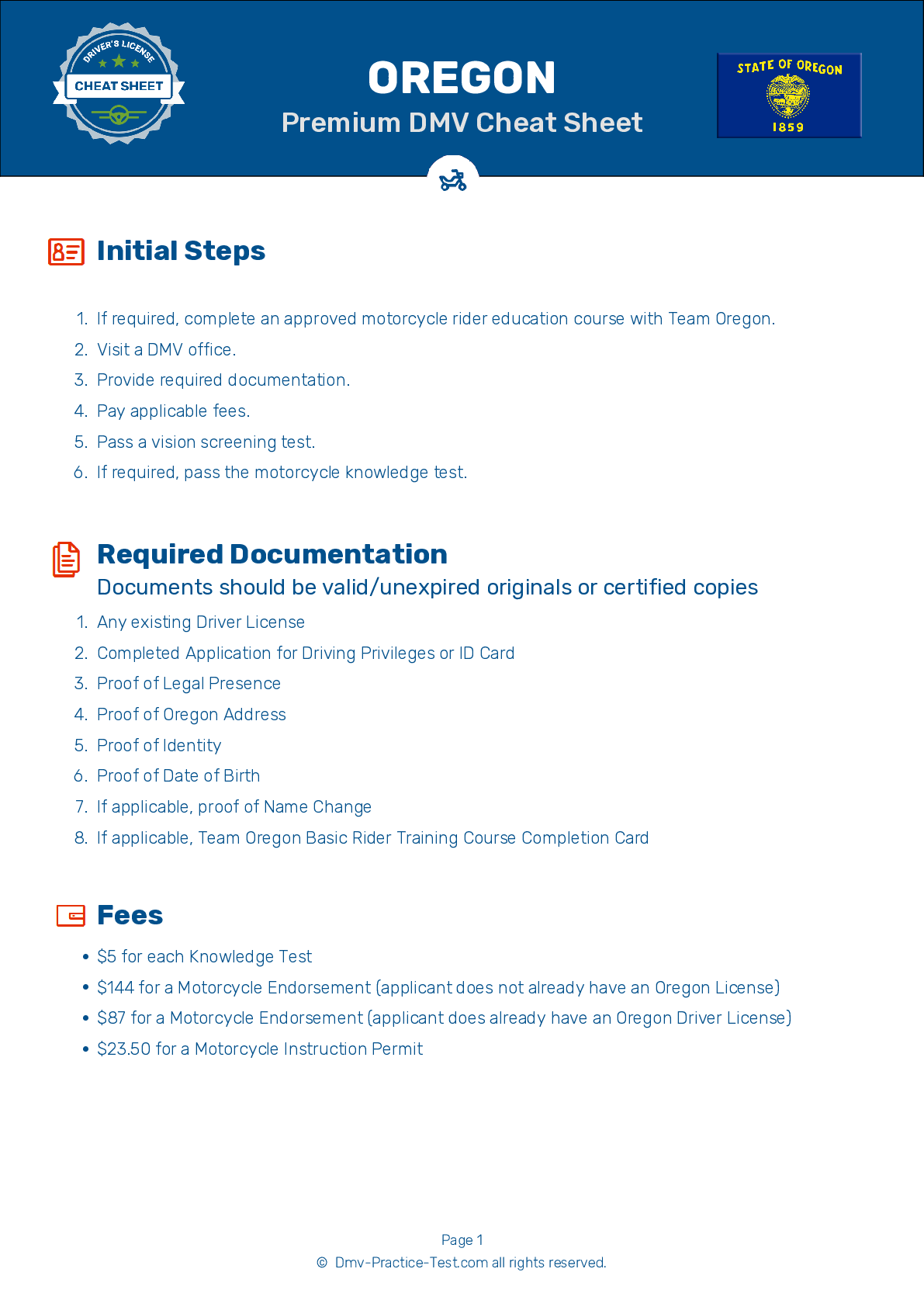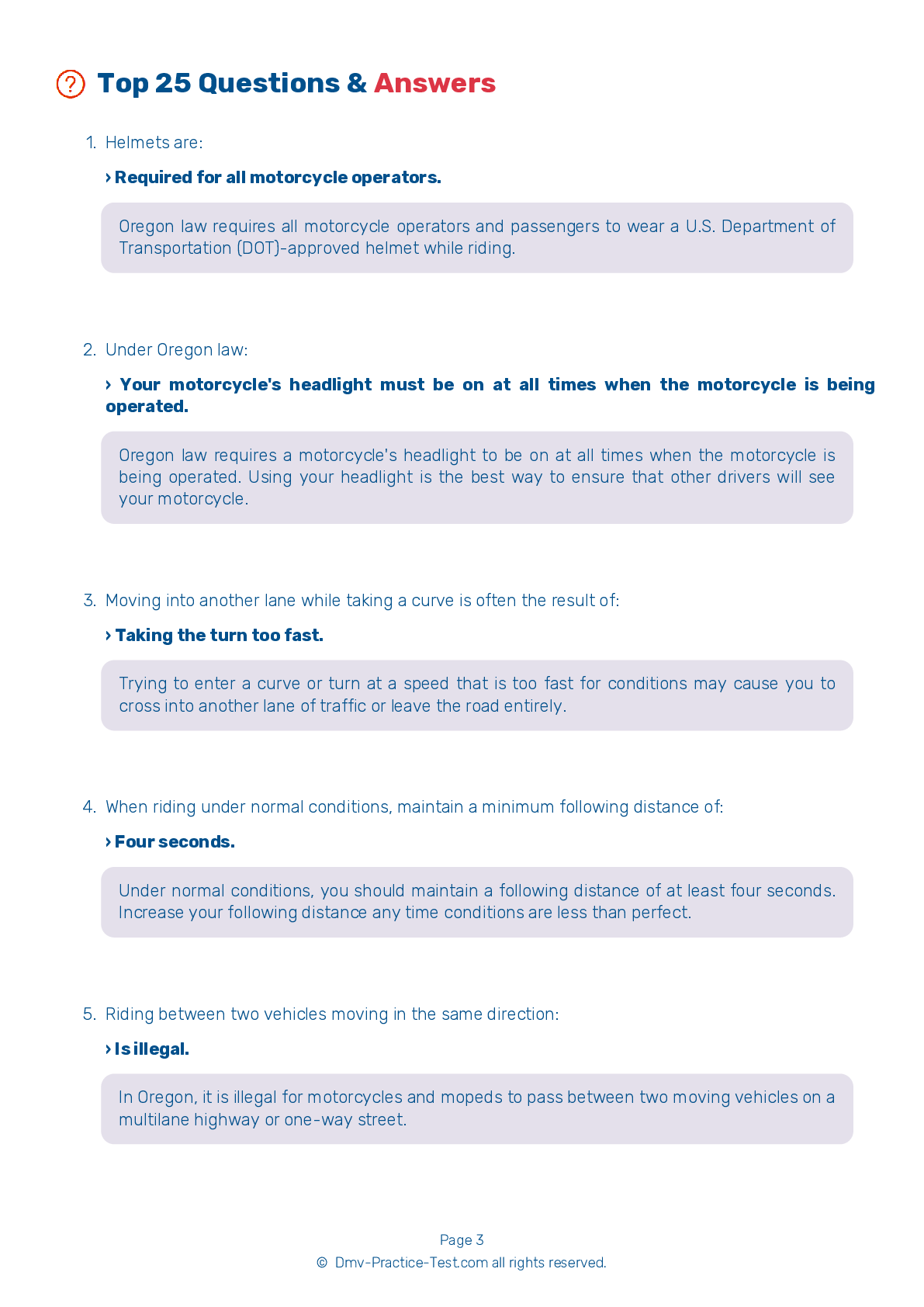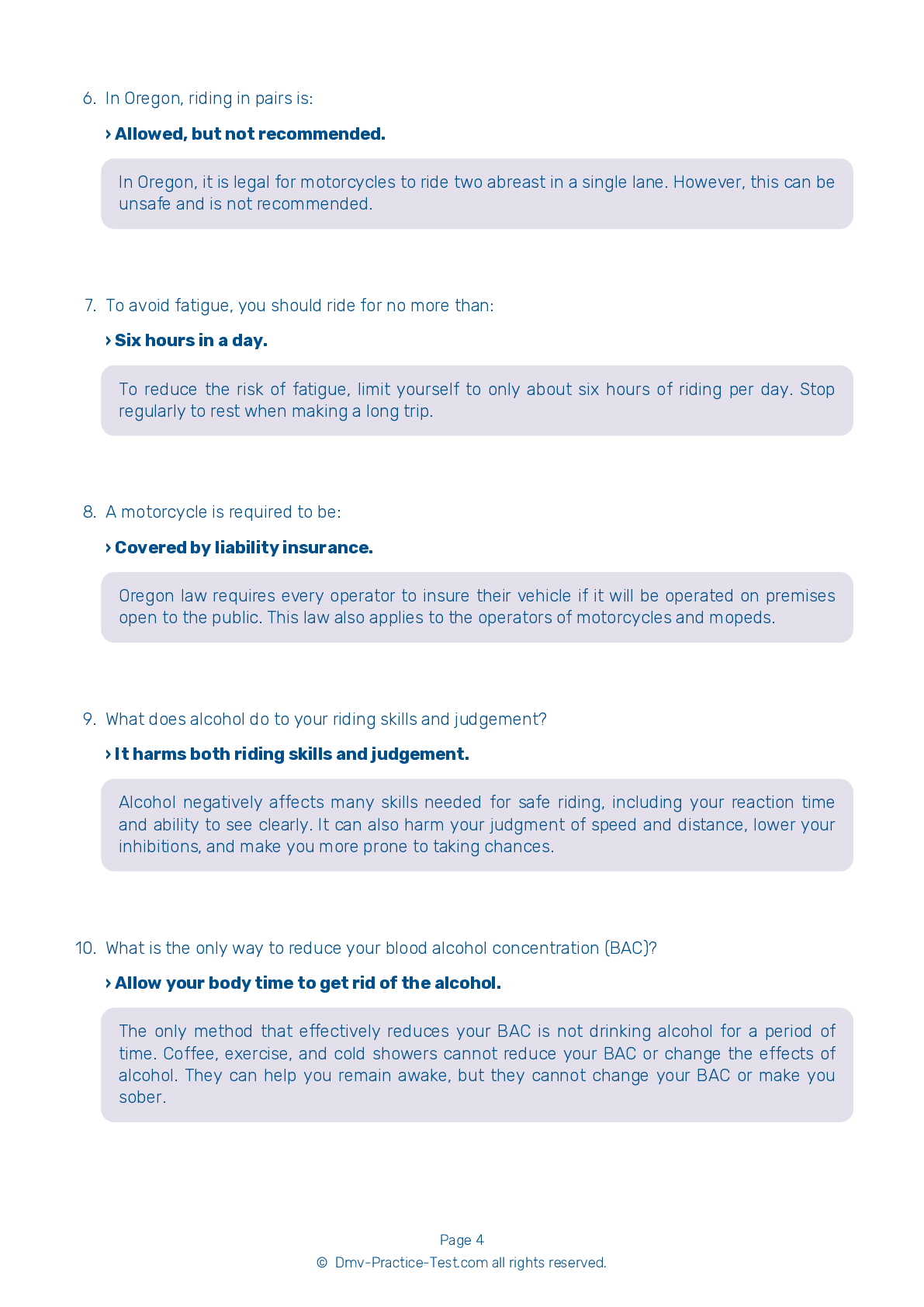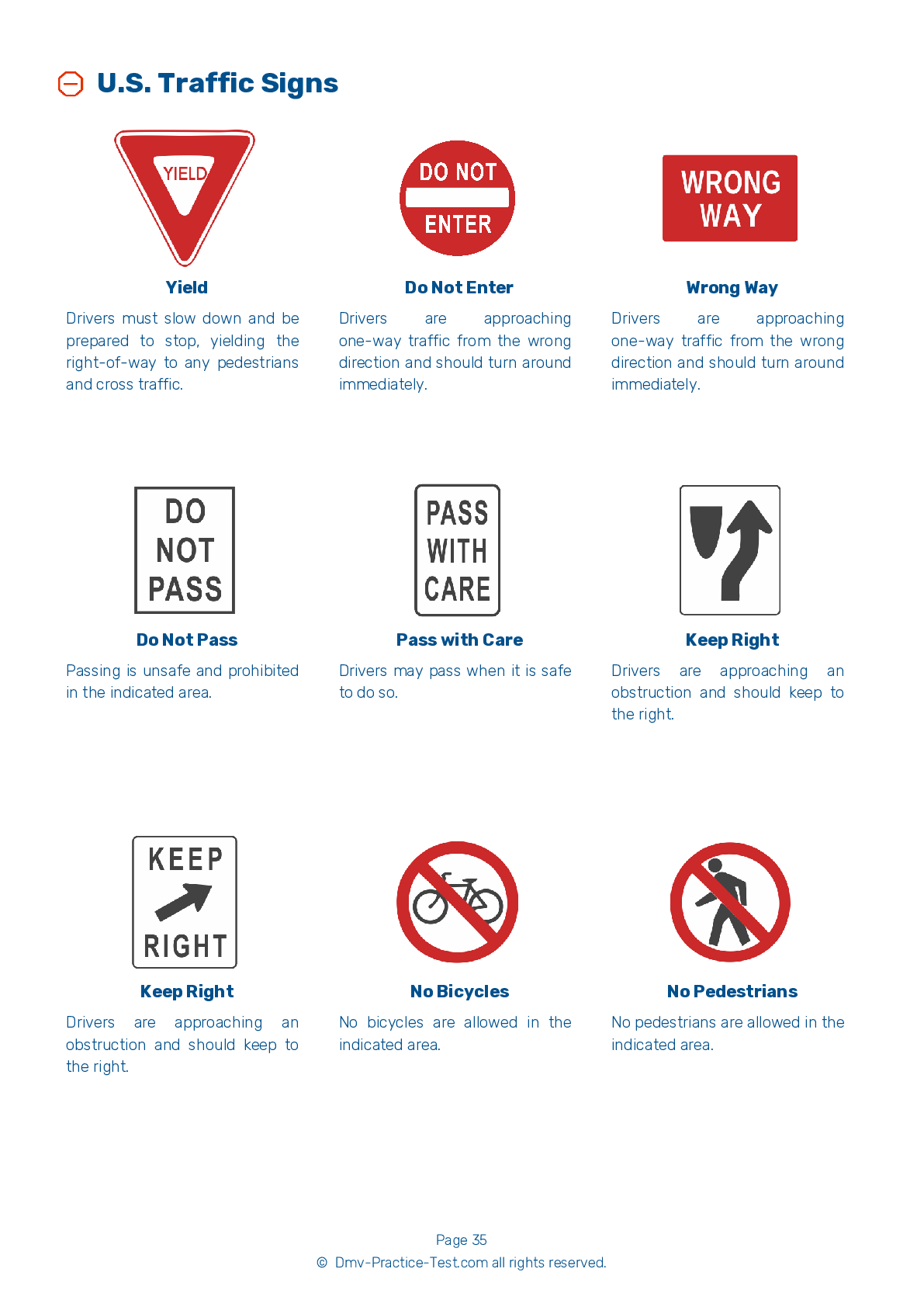Motorcycle Test | License OR 2025 | FREE Online Practice! #5 Page 4 of 4
Take this FREE motorcycle test (license in OR 2025) to check your knowledge of the road rules. To improve your results, download a motorcycle handbook online, study theory, and practice for free on our website. Still worried about how to get a motorcycle license in Oregon in 2025? Check our website for more sample tests, train as much as possible, and boost your grades!
19 . When riding in a group, inexperienced riders should position themselves:
In a group of motorcyclists, riders with less experience should be positioned toward the front of the group, just behind the leader. This will allow more experienced riders behind them to keep an eye on them.
20 . If you began a curve on the outside and no traffic is present when you are exiting the curve, you should move:
If no traffic is present when you are taking a curve, start on the outside of the curve to increase your line of sight and the effective radius of the turn. As you turn, move toward the inside of the curve. As you pass the center of the curve and prepare to exit, move back toward the outside position. Remain aware of changing road and traffic conditions and adjust as necessary.
21 . When you are stopped, you:
Shift down through the gears with the clutch as you slow or stop. Remain in first gear while you are stopped so you can move quickly if needed.
22 . Most crashes occur in broad daylight. To be more visible, you should:
Because most crashes happen in broad daylight, you should always wear brightly-colored clothing while riding, even during the day.
23 . To increase your chances of being seen at an intersection, you should:
To increase your chances of being seen at an intersection, leave your headlight turned on and ride in a lane position that most easily allows oncoming traffic to see you. Maintain a space cushion that allows you to take evasive action if necessary. Never assume that another driver sees you, even if you make eye contact with the driver.
24 . When riding in a group, motorcyclists:
When riding in a group, you should maintain close ranks but still keep an adequate space cushion around each rider.
25 . When being followed too closely by another vehicle, you should:
The best way to deal with a tailgater is to get them ahead of you. If you can do so safely, change lanes and let them pass. Speeding up may only increase the danger by encouraging them to continue tailgating you at a higher speed.
See the exact questions that will be on the 2025 Oregon DMV exam.
99.2% of people who use the cheat sheet pass the FIRST TIME
Jeneen was tired of paying $5/gallon. She got herself a scooter that required the motorcycle license. She studyed the motorcycle test cheat sheet and passed her test the next day!
Christopher tells us how he knew nothing prior to obtaining the motorcycle study guide, and he only got one question wrong because he clicked on the wrong answer by mistake.



